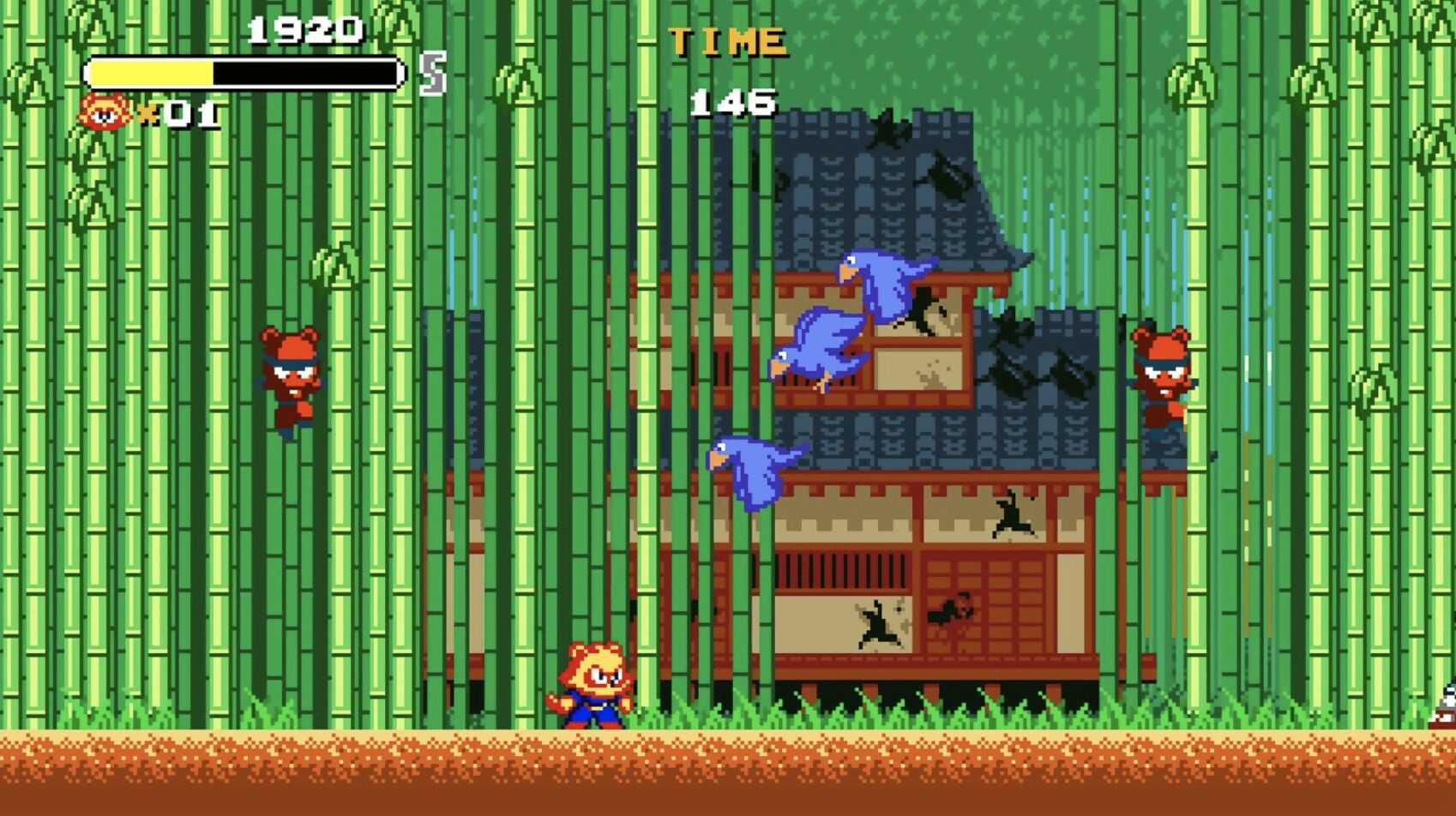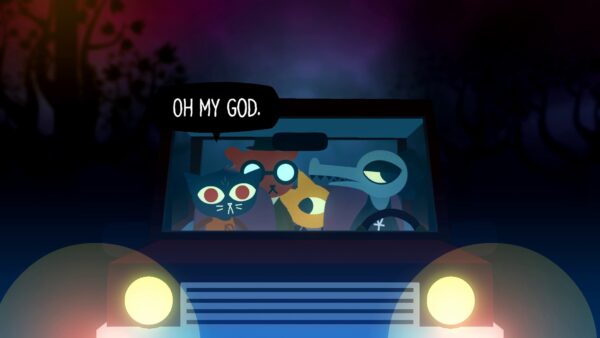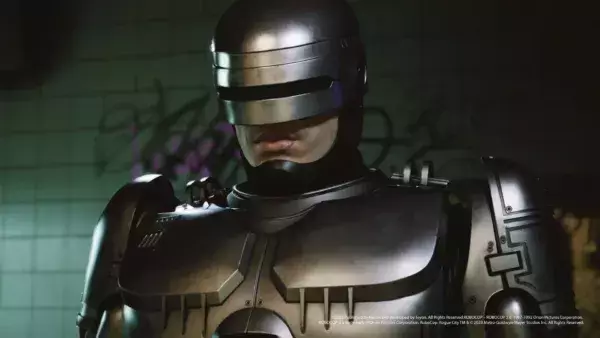
The vast majority of video games prey on a peculiarly human quirk: we relish a challenge. This means that, in our boundless quest to defeat bosses, gain high scores, or simply reach a final cutscene, we spend a considerable amount of our spare time in a state that lies somewhere between intense concentration and outright frustration. Or at least, that’s how I’ve spent most of my time this month, as I’ve found myself drawn into the febrile, deceptively hostile world of Tanuki Justice.
A game that came to my attention thanks to HappyConsoleGamer on YouTube, Tanuki Justice is a run-and-gun platformer from Wonderboy Bobi, who previously brought us the charming Wonder Boy-alike, Aggelos. Tanuki Justice is, even beyond its 8-bit-style sprites and chiptune soundtrack, retro to its very core: it offers up a nightmare landscape of one-hit kills, aggressively fast enemies, and levels with no checkpoints. Sure, you start from where you left off when you die, but lose all your lives, and it’s back to the start of the stage with you. And while each stage is linear and short, you’ll still find yourself bouncing off the same sections again and again if your skills aren’t up to scratch – which, evidently, mine aren’t.

Alex Kidd in Miracle World DX: lovely to look at, slightly less lovely to actually play
Tanuki Justice introduces an alternate feudal Japan of furry, shuriken-throwing avengers and feline samurai, and it’s instantly disarming. As you fend off squirrels in bandanas and kamikaze koi carp, it’s fun to spot all the references to other games: Tecmo’s early Ninja Gaiden titles are an obvious touchstone, but background details also provide nerdy allusions to deep retro cuts like Irem’s Ninja Spirit, Taito’s The Legend of Kage, and (possibly) Jaleco’s Ninja-kun. Stage two’s leafy setting even appears to pay homage to Ninja Gaiden on the Sega Master System, a series entry likely played by all of a dozen people worldwide.
With those old-school ninja references comes the bit that every classic ninja game got exactly right: tight, pixel-perfect controls. Tanuki Justice is brutally tough, but the agility of its raccoon hero and the responsiveness of his movement means it seldom feels unfair. Get into the flow, and there’s a real thrill to narrowly dodging a barrage of projectiles, killing a few rank-and-file enemies to fill your charge meter, and then unleashing a huge super-shuriken to finish off a boss.

These enemies are less ‘koi’ than they first appear (sorry)
The same applies to the platforming: level three has you ascending a waterfall by jumping on narrow, single-character wide logs – a possible nod to a similar scenario in The Revenge of Shinobi on the Sega Mega Drive. When you get the timing right, it’s a pleasing challenge to surmount, even if the process of getting to that level of proficiency can be controller-gnawingly frustrating.
At the time of writing, I haven’t come close to completing Tanuki Justice, which is humbling given that a skilled player can finish the thing in less than 20 minutes. But far from being off-putting, the game’s difficulty level is spurring me on: the further I journey into its fluffy world of death, the more attuned I become to its pace and timing. What seemed like ridiculously difficult sections can now be completed with ease, and even the meanest-looking bosses are starting to feel more friendly as I’ve begun to memorise their attack patterns.
Tanuki Justice is, in other words, a retro-style game done right. It’s a contrast, in fact, to Alex Kidd in Miracle World DX, Merge Games and Jankenteam’s remake of Sega’s Master System platformer. At first glance, it’s a charmer: the made-over sprites and backgrounds are gorgeous, and there are a few quality-of-life improvements thrown in. On the original hardware, you had to press pause to get to the item menu; the problem was, Sega put this function on the console rather than on the joypad, which meant that you had to drag yourself off the sofa every time you wanted to activate, say, a power bracelet. In Alex Kidd DX, items are thankfully mapped to a face button.
In other areas, though, Alex Kidd DX feels retro in precisely the wrong way: Kidd’s hitbox feels absolutely huge. Couple this with the short range of his punch, and you’re left with a lot of deaths simply because you edged closer to an enemy than intended.
Alex Kidd DX’s most bemusing design decision, meanwhile, is to leave the original game’s rock-paper-scissors battles pretty much intact. These were a frustrating element of the game in 1986, and they feel even more irksome in 2021; you’ve fought your way to the end of a stage, and whether you progress further or lose a life is down to sheer luck. Admittedly, DX doesn’t knock you too far back in the stage if you’re beaten, and it’s still the case that an item you find later in the game will allow you to ‘see’ your opponent’s move ahead of time, but it’s still a curious thing to leave untouched when other elements of Alex Kidd have been so affectionately reworked.
Alex Kidd DX isn’t an awful game by any means, and there are stretches where the series’ charm shines through. When compared to Tanuki Justice, though, Alex Kidd DX feels like it’s taken plenty of good bits from the medium’s history, but also some of the bad bits, too.





